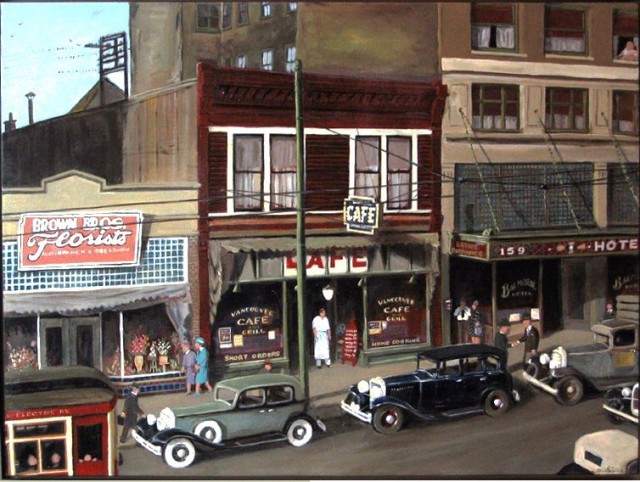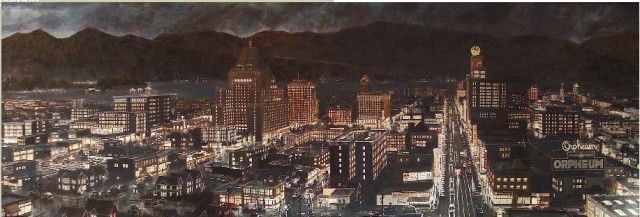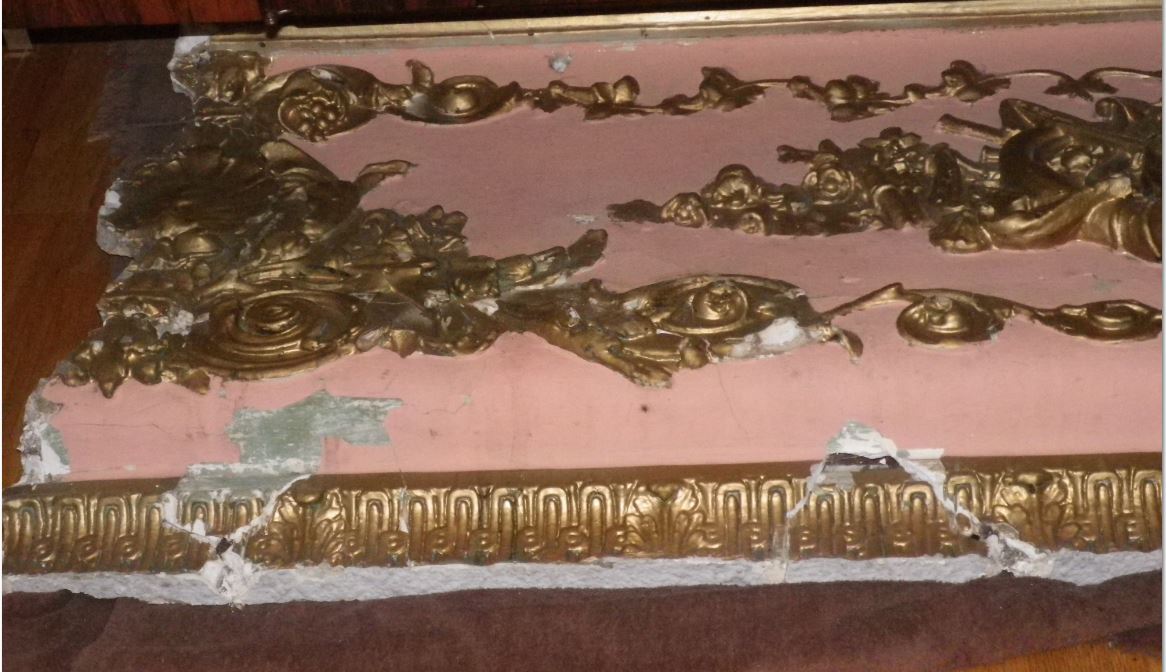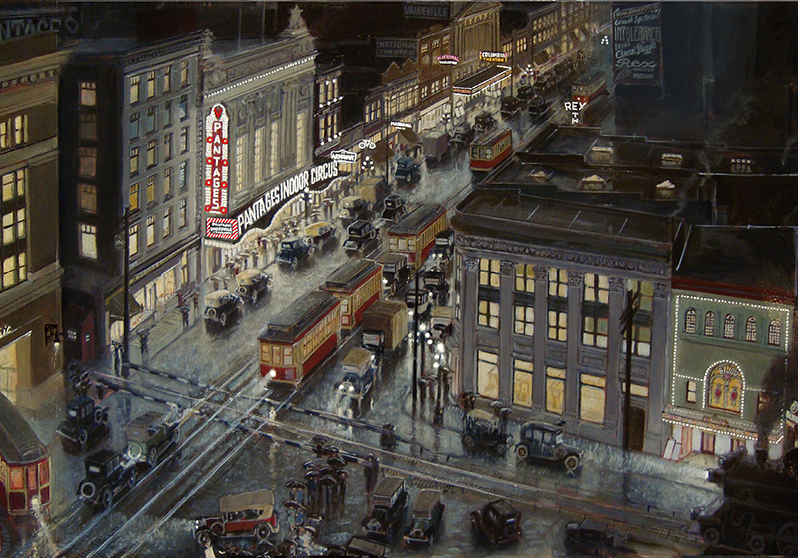Now a Cold Case Canada Podcast: Halloween Special – Three Ghost Stories and a Murder
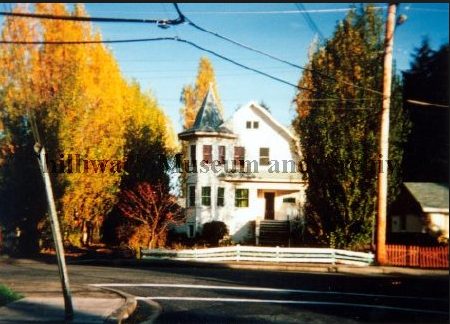
For over six decades a large white house stood at the corner of Williams Street North and Portage Avenue in Chilliwack. The stately old manor had a three-storey tower with a turret topped off by a witch’s hat roof, and for a while, the house put the town on the tourist map.
Hetty and Douglas Fredrickson unknowingly bought the haunted house in 1965, and it wasn’t long before strange things starting happening. One upstairs bedroom was particularly active. Drawers opened and slammed shut; a heavy old iron bedstead moved around by itself, and the Fredrickson’s heard footsteps in the room, when the rest of the family were gathered downstairs.

Neighbours told her two stories about the house. One said that a man committed suicide there in 1956. Another said a woman was murdered and cemented in the chimney.
Hetty found a hidden door, a boarded over passageway and a small undiscovered turret room. And if that wasn’t weird enough, things were about to get worse.
She saw an illuminated mist that reeked of perfume, and then she began to dream about a ghost. In these dreams she’d see the shape of a terrified woman in a red dress with yellow flowers.
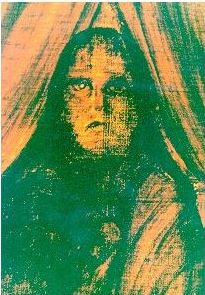
Hetty, an artist, decided to paint the ghost.
“It was not easy,” she said. “Every time I tried to paint, the face would start out as a man even as I tried to paint a woman. But I really concentrated and at last painted a likeness of the woman.”
In 1966 the Chilliwack Progress wrote about Hetty’s ghost. The national media jumped on the story and it was reported in papers as far away as Japan.
But even scarier than the changing painting and the rumoured deaths, was the public reaction. One Sunday, 700 people turned up at the Fredricksons to try to catch a glimpse of the ghosts. They broke the front steps, prompting the couple to put up a “no sightseers” sign.
It was all too much for Douglas, a logger, and the couple left for Vancouver Island in 1968.
The next owners moved into the house with their eight kids and the family dog. Known only as Mrs. X in the media, the owner told a reporter that while she didn’t believe in ghosts, there were at least three sharing the house, including a mother ghost who liked to watch television with the family. Her husband, who didn’t believe in ghosts either, slept with a gun under his pillow.
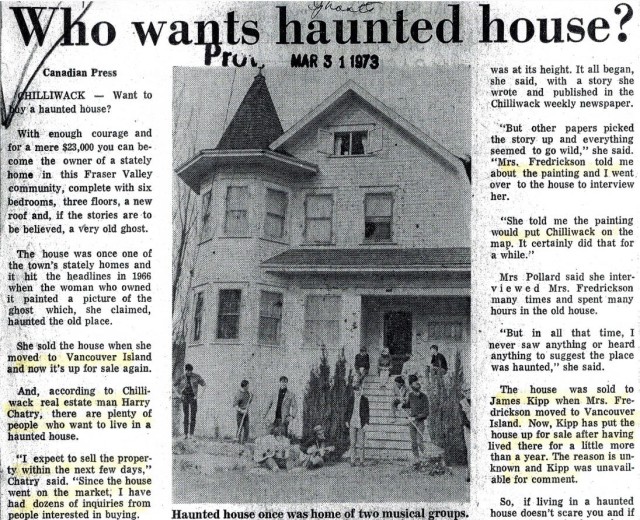 In 1973, a clever realtor decided to embrace the poltergeist. The house he said was available for $23,000 and included six bedrooms, a new roof, and a very old ghost.
In 1973, a clever realtor decided to embrace the poltergeist. The house he said was available for $23,000 and included six bedrooms, a new roof, and a very old ghost.
“It used to be that selling a haunted house was a real estate man’s nightmare,” the realtor said. “Today haunted houses seem to attract more interest than those that are not.”
Two years later the house burned down.
For more ghostly stories check out these podcast episodes:
S1 E9 Three Ghost Stories and a Murder
© All rights reserved. Unless otherwise indicated, all blog content copyright Eve Lazarus.


